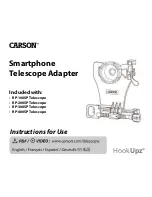
140
SAFETY
so-called "shields" may interfere with proper operation of the phone.
The phone may be forced to boost its power to compensate, leading to
an increase in RF absorption. In February 2002, the Federal trade
Commission (FTC) charged two companies that sold devices that
claimed to protect wireless phone users from radiation with making
false and unsubstantiated claims. According to FTC, these defendants
lacked a reasonable basis to substantiate their claim.
11. What about wireless phone interference with medical
equipment?
Radiofrequency energy (RF) from wireless phones can interact with
some electronic devices. For this reason, FDA helped develop a detailed
test method to measure electromagnetic interference (EMI) of implanted
cardiac pacemakers and defibrillators from wireless telephones. This test
method is now part of a standard sponsored by the Association for the
Advancement of Medical instrumentation (AAMI). The final draft, a joint
effort by FDA, medical device manufacturers, and many other groups,
was completed in late 2000. This standard will allow manufacturers to
ensure that cardiac pacemakers and defibrillators are safe from wireless
phone EMI.
FDA has tested hearing aids for interference from handheld wireless
phones and helped develop a voluntary standard sponsored by the
Institute of Electrical and Electronic Engineers (IEEE). This standard
specifies test methods and performance requirements for hearing aids
and wireless phones so that that no interference occurs when a person
uses a “compatible” phone and a “compatible” hearing aid at the same
time. This standard was approved by the IEEE in 2000.
Содержание CDM7075
Страница 1: ...OM7075VW...
Страница 29: ...28 MEMO...
Страница 51: ...50 SETTINGS...
Страница 81: ...80 MEMO...
Страница 93: ...92 MEMO...
Страница 104: ...103 CHAPTER 7 MESSAGING This chapter address Voicemail TXT and PIX message CHAPTER 7 MESSAGING...
Страница 162: ...161 MEMO...
















































